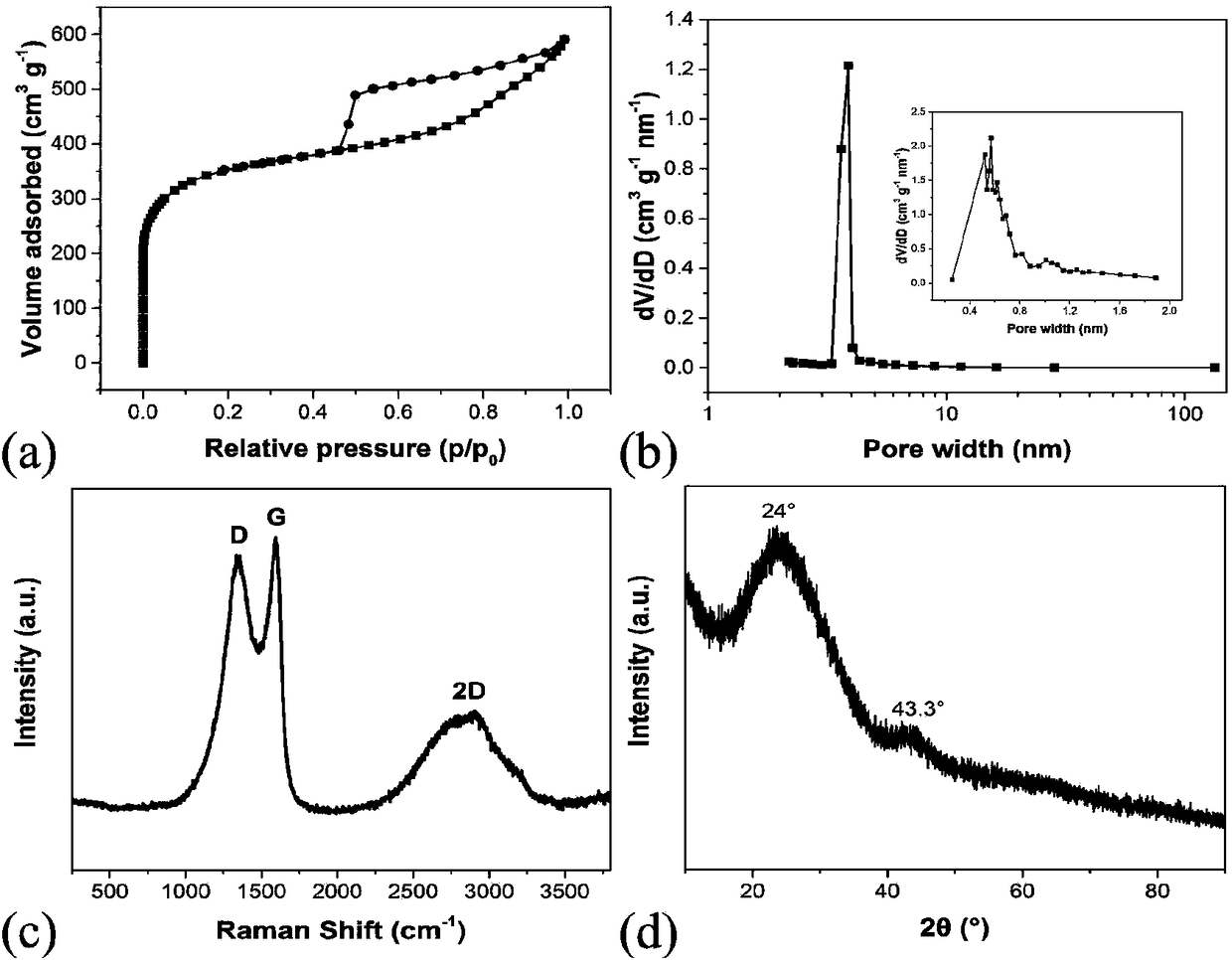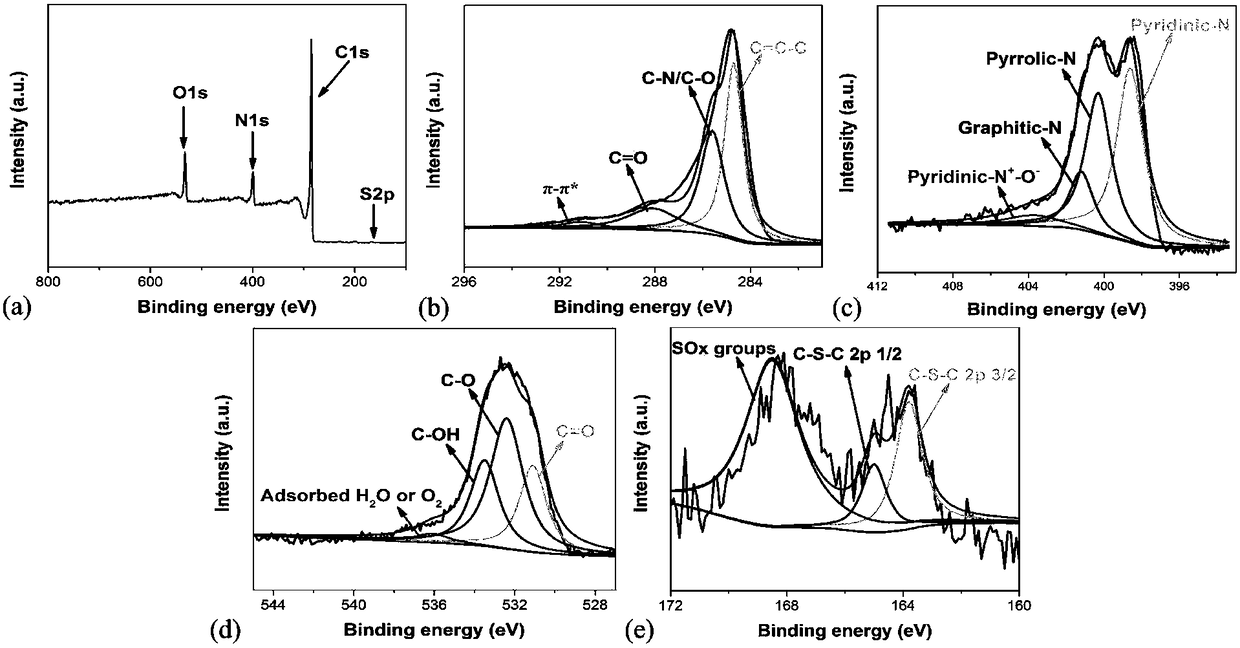Method for preparing carbon material from flocculated sludge and dye hazardous wastes, and carbon material
A technology for carbon materials and dyes, which is applied in carbon preparation/purification, chemical instruments and methods, flocculation/precipitation water/sewage treatment, etc., can solve the problems of volume reduction, secondary air pollution, large investment, etc., and achieve economical protection. The effect of generating income and protecting the environment
- Summary
- Abstract
- Description
- Claims
- Application Information
AI Technical Summary
Problems solved by technology
Method used
Image
Examples
Embodiment 1
[0049] Embodiment 1: The embodiment of the present invention discloses a method for preparing carbon materials by using flocculation sludge and hazardous dye waste, including the following steps:
[0050] Step d: the dye wastewater comes from a local printing and dyeing enterprise, take 5L dye wastewater, the dye concentration is 200ppm during flocculation, adjust the solution pH=9; add cationic flocculant BADT-CTS (2,4-bis(dimethylammonium) -6-Chloro-[1,3,5]-triazine-based chitosan ether, the flocculant concentration is controlled at 9g / L, let it stand for a day, remove the upper liquid, and centrifuge the lower solid to accelerate solid-liquid separation. The rotational speed was 4500 rpm, and the centrifugation time was 12 minutes to obtain solid flocs.
[0051] Step a: Dry the solid flocs obtained in step d at 100°C for 42 hours, grind them into 120-mesh powder, and dry them in vacuum at 65°C for 8 hours to obtain dry flocculated sludge;
[0052] Inject high-concentration...
Embodiment 2
[0057] Embodiment 2: The embodiment of the present invention discloses a carbon material prepared by using flocculation sludge and dye hazardous waste. The preparation method includes the following steps:
[0058] Step d: the dye wastewater comes from a local printing and dyeing enterprise, take 5L dye wastewater, the dye concentration is 200ppm during flocculation, adjust the solution pH=9; add cationic flocculant BADT-CTS (2,4-bis(dimethylammonium) -6-Chloro-[1,3,5]-triazine-based chitosan ether, the flocculant concentration is controlled at 9g / L, let it stand for a day, remove the upper liquid, and centrifuge the lower solid to accelerate solid-liquid separation. The rotational speed was 4500 rpm, and the centrifugation time was 12 minutes to obtain solid flocs.
[0059] Step a: Dry the solid flocs obtained in step d at 100°C for 42 hours, grind them into 120-mesh powder, and dry them in vacuum at 65°C for 8 hours to obtain dry flocculated sludge;
[0060] Inject high-conc...
Embodiment 3
[0076] Embodiment 3: The embodiment of the present invention discloses a method for preparing carbon materials by using flocculation sludge and hazardous dye waste, including the following steps:
[0077] Step d: The dye wastewater comes from a local printing and dyeing enterprise. Take 5L of dye wastewater. When flocculating, the dye concentration is 700ppm, and the pH of the solution is adjusted to 7.5; add cationic flocculant BADT-CTS (2,4-bis(dimethylammonia) -6-Chloro-[1,3,5]-triazine-based chitosan ether, the flocculant concentration is controlled at 13g / L, let it stand for a day, remove the upper liquid, and centrifuge the lower solid to accelerate solid-liquid separation. The rotational speed was 4000 rpm, and the centrifugation time was 15 minutes to obtain solid flocs.
[0078] Step a: The solid flocs obtained in step d are air-dried at 105°C for 46 hours, ground into 140-mesh powder, and vacuum-dried at 80°C for 10 hours to obtain dry flocculated sludge;
[0079] I...
PUM
 Login to View More
Login to View More Abstract
Description
Claims
Application Information
 Login to View More
Login to View More - R&D
- Intellectual Property
- Life Sciences
- Materials
- Tech Scout
- Unparalleled Data Quality
- Higher Quality Content
- 60% Fewer Hallucinations
Browse by: Latest US Patents, China's latest patents, Technical Efficacy Thesaurus, Application Domain, Technology Topic, Popular Technical Reports.
© 2025 PatSnap. All rights reserved.Legal|Privacy policy|Modern Slavery Act Transparency Statement|Sitemap|About US| Contact US: help@patsnap.com



